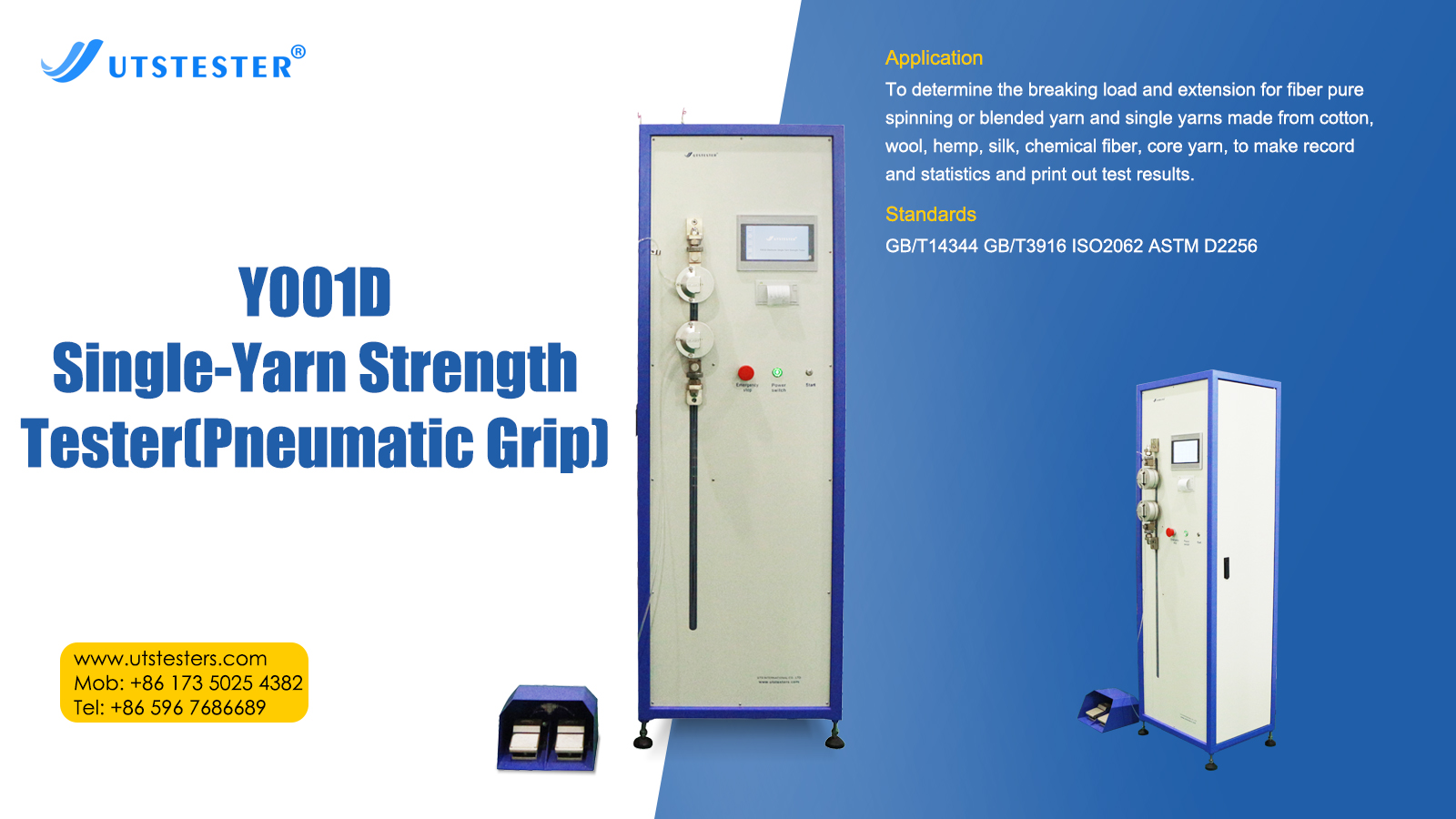Twist test principle: The twist is usually not evenly distributed on the entire yarn. When testing the twist, the sample should be taken 1 m away. Under the specified tension, clamp both ends of the sample of a certain length, rotate one end of the sample, and remove the twist of the yarn sample until the constituent units of the yarn being tested are parallel. The twist of the yarn is obtained based on the number of revolutions required to remove the yarn twist.
When the yarn was stretched to break, it was found that not all the fibers in the broken section were broken, but that some of the fibers were broken and the other part of the fibers slipped, and the broken part of the fibers did not break at the same time. This breaking performance is different from that of the single fiber. The yarn strength is closely related to the twist of the yarn. As the twist increases, the yarn strength continues to increase. However, after reaching a certain twist, if the twist is continued, the strength will decrease. The advantage is that the twist increases and the friction resistance between fibers increases, so that During the fracture process, the component of strength increases. The disadvantage is that the twist increases. The inclination angle between the fiber and the yarn axis increases. The fiber strength can withstand a reduced force component in the yarn axial direction. Moreover, excessive twisting will increase the uneven distribution of fiber stress inside and outside the yarn. , aggravating the non-simultaneity of fiber breakage, causing the strength to increase with the increase of twist. When the two are equal, the strength is maximum. At this time, the twist is the critical twist, and the twist coefficient corresponding to the critical twist is called the critical coefficient. As the twist increases, the twist returns As the angle increases, the light will be reflected to the side, resulting in poor gloss and poor hand feel. On the contrary, the hand feel will be soft, but if the twist is too small, hairiness will occur and the hand feel will be loose, and the gloss may not necessarily be good.
The twist coefficient and twist direction mainly depend on the quality requirements of the final product. The twist coefficient is different for different uses. The twist direction depends on the needs of the finished product and post-processing. In order to reduce the inconvenience of turning over and operating the yarn machine, the twist direction is generally Z. For example, cotton with long fiber length, fineness, and high grade can have a smaller twist coefficient. The twist coefficient of fine yarn is larger than that of thick yarn. The elongation is the elongation of cotton yarn. Under a certain tensile load, the cotton yarn is stretched and elongated. , its length is called the total elongation. When the load is removed, the stretched cotton yarn quickly retracts and cannot return to the original length. This retractable length is called elastic elongation, that is, the elastic elongation and the total elongation. Percentage, the elasticity of yarn increases with the increase of twist, but starts to decrease after reaching a certain twist. Generally, the twist range is close to the maximum elasticity.
Commonly used twist coefficients are higher for carded warp yarns, and generally lower for knitted warp yarns, about 3.5-3.6. Due to different uses of yarn, there are different twist coefficient yarn products. According to Japanese textile calculation data, they are divided into: ordinary twist = 4.0 (twist coefficient), loose twist=3.4 (twist coefficient), special loose twist=1.32-2.8 (twist coefficient), strong twist=5.0-5.4 (twist coefficient), special strong twist=5.0-6.5 (twist coefficient). High-twist yarn generally needs to go through the yarn steaming process before it can be woven, and sometimes it is necessary to install a twist remover before it can be woven.
Twist or twist coefficient is a comprehensive parameter that affects various properties of yarn. It is not only closely related to single yarn breaking strength and single yarn breaking elongation, but also affects yarn linear density, evenness CV%, thickness Knots, details, neps, hairiness and many other factors; these factors change in different trends due to different degrees of twisting of the yarn. Therefore, in the normal yarn twist process adjustment, we must not only pay attention to the changes in twist, single yarn breaking strength, and single yarn breaking elongation, but also pay attention to the corresponding changes in the overall quality of the yarn. This is Strengthening total quality management is an important condition to meet customer needs.

Email: hello@utstesters.com
Direct: + 86 152 6060 5085
Tel: +86-596-7686689
Web: www.utstesters.com
 +86 152 6060 5085
+86 152 6060 5085





 English
English русский
русский español
español português
português










 hello@utstesters.com
hello@utstesters.com hello@utstesters.com
hello@utstesters.com +86 152 6060 5085
+86 152 6060 5085 +8615260605085
+8615260605085